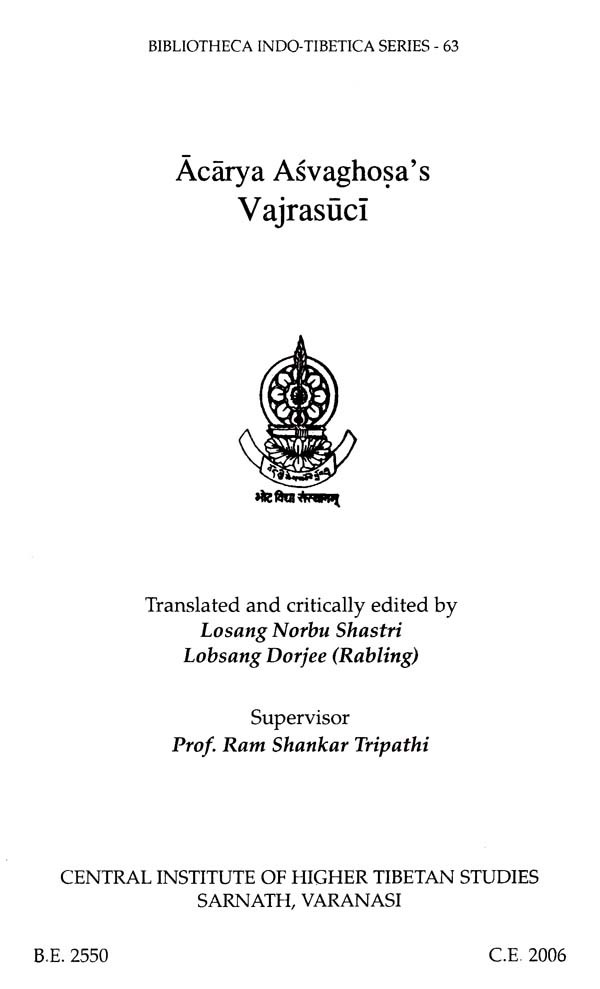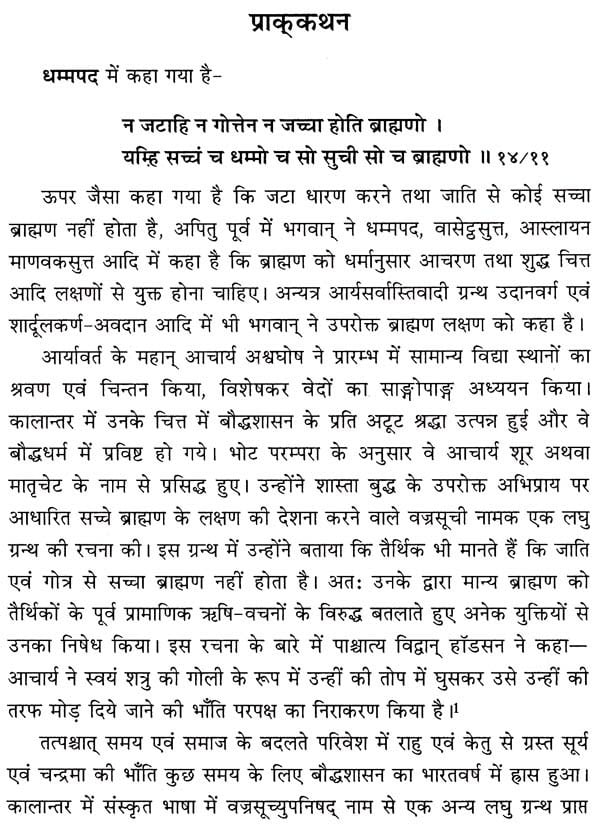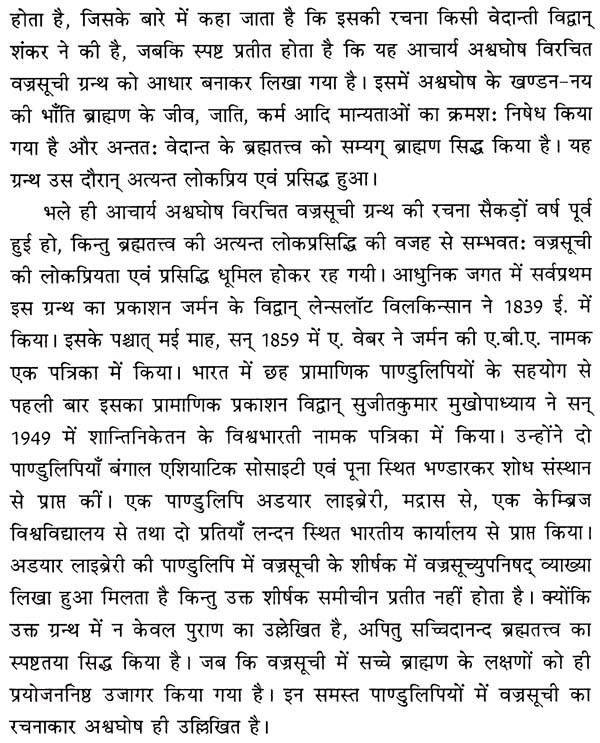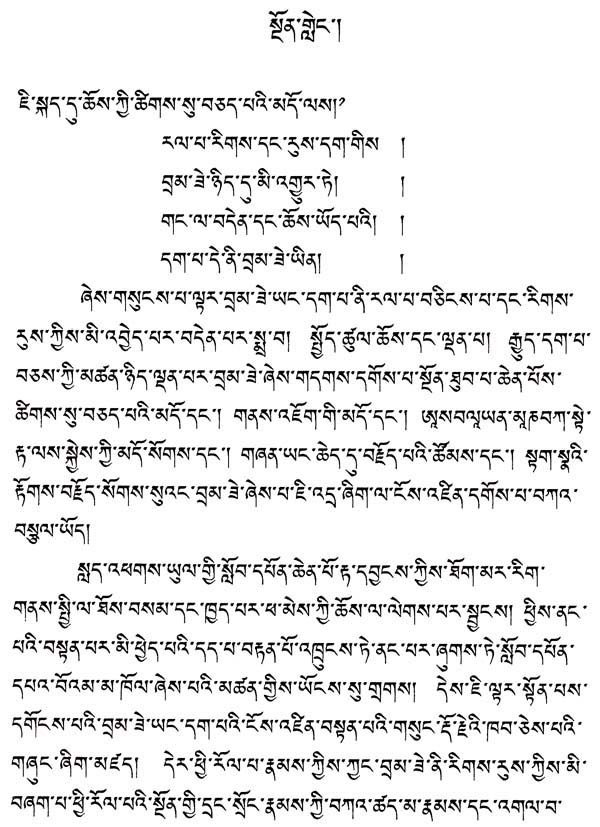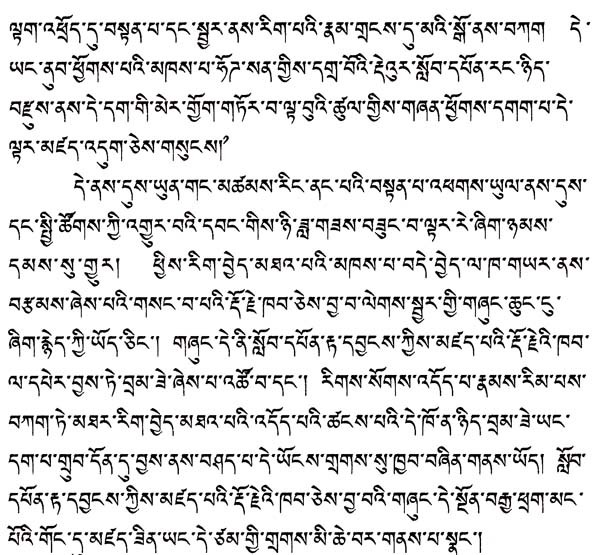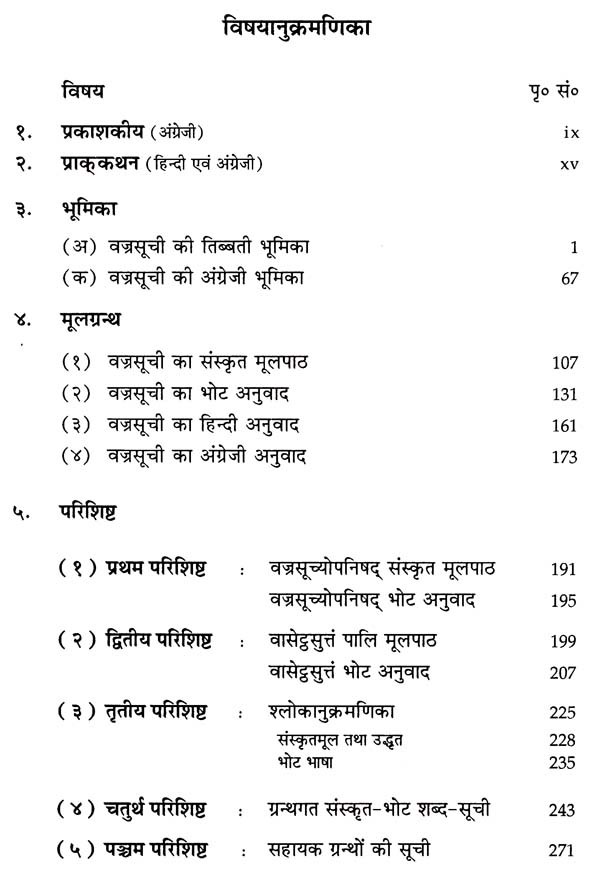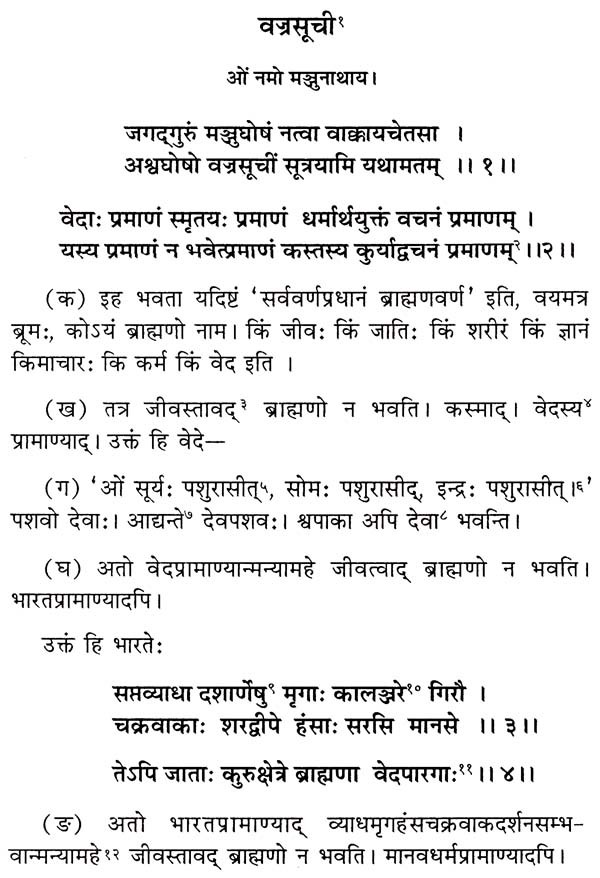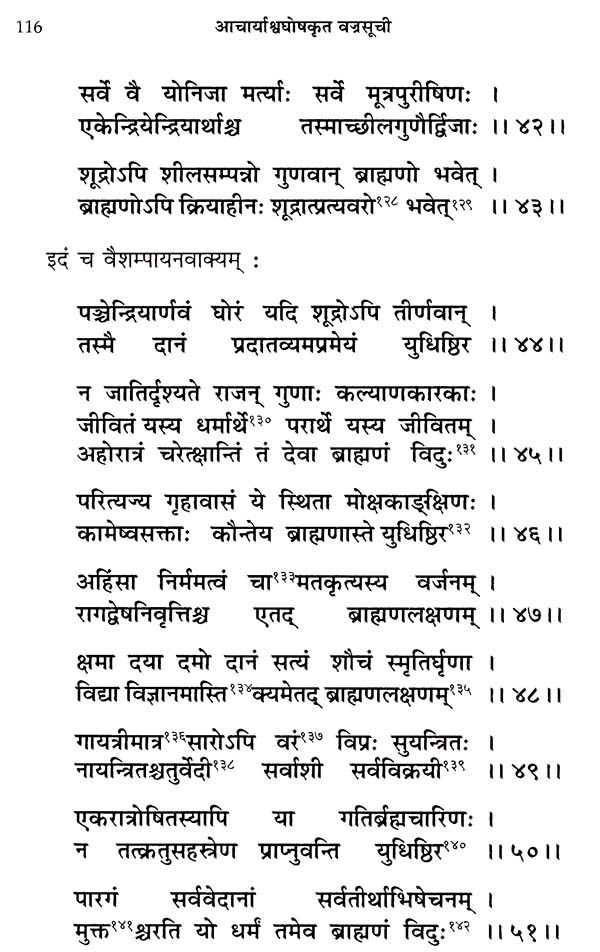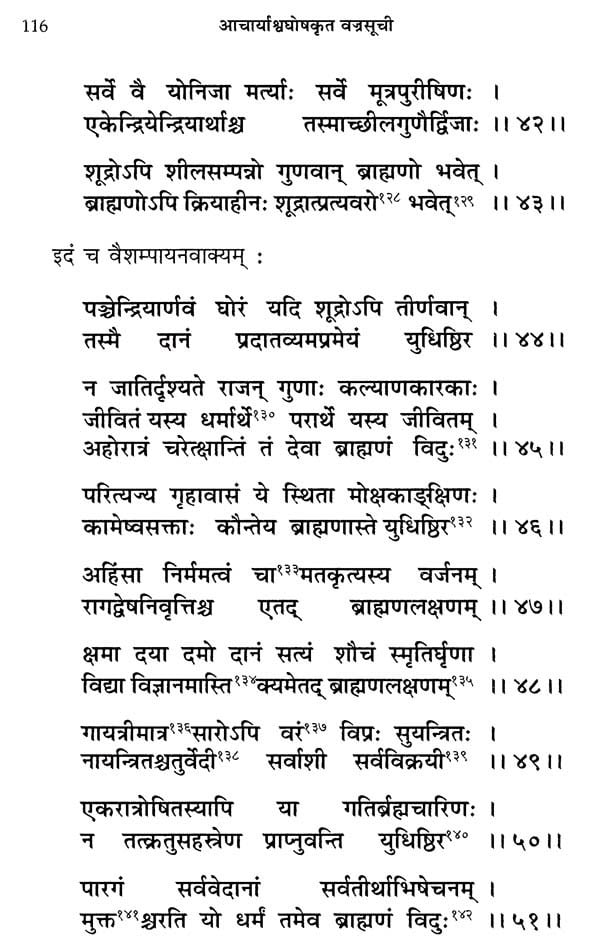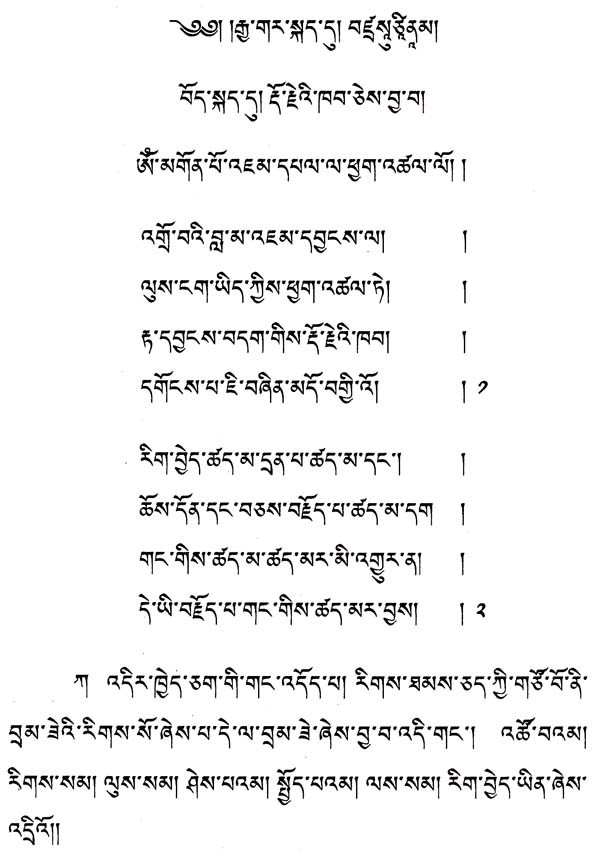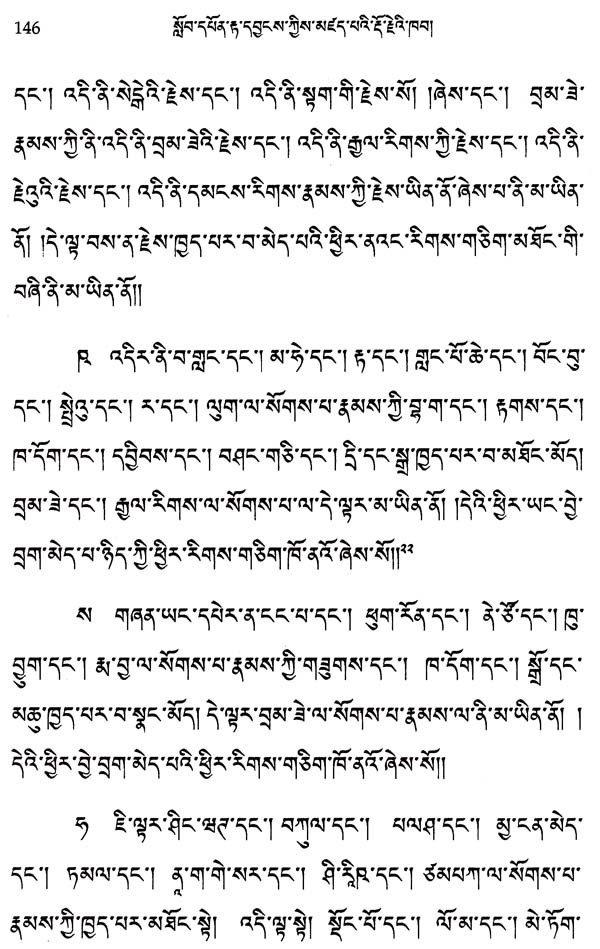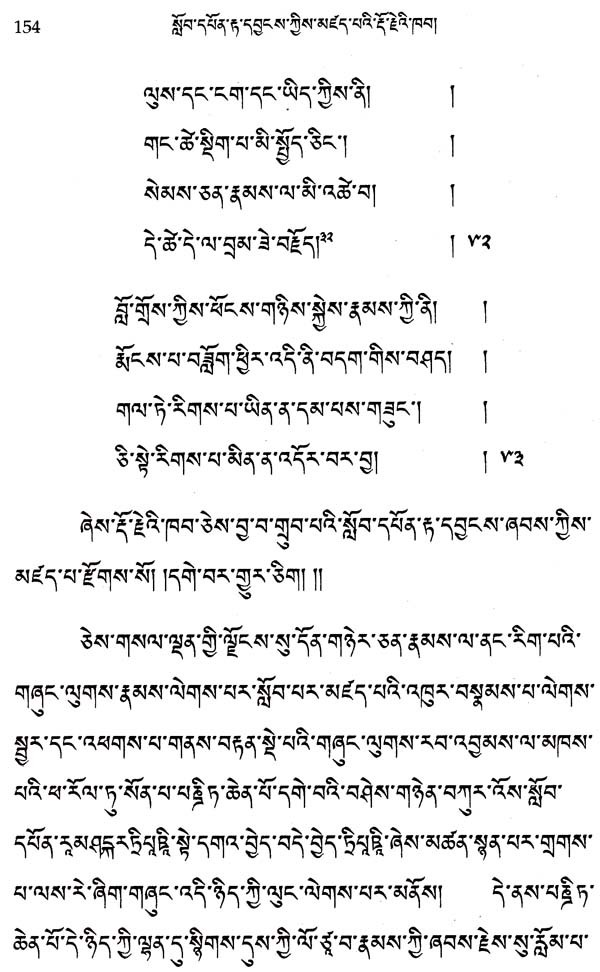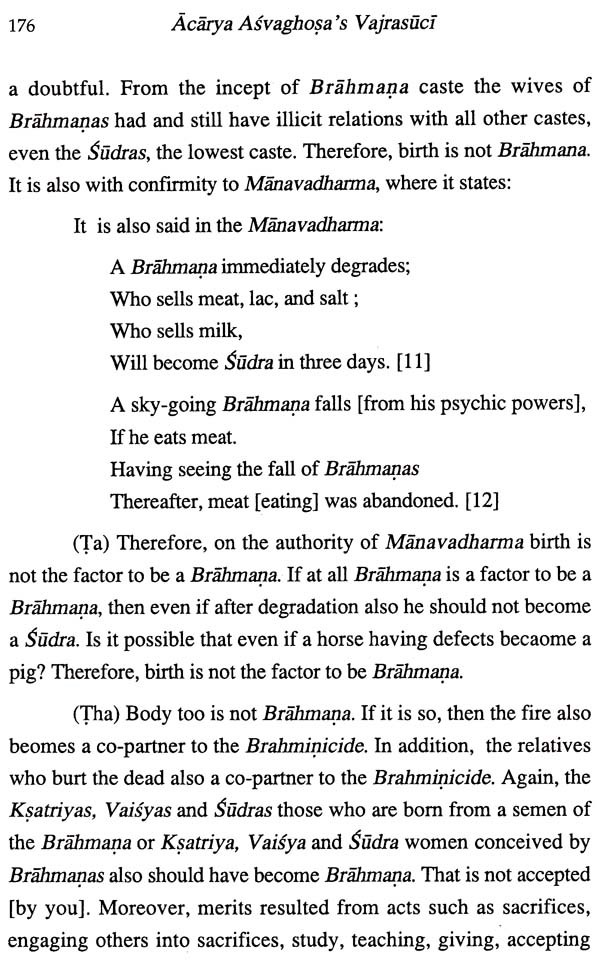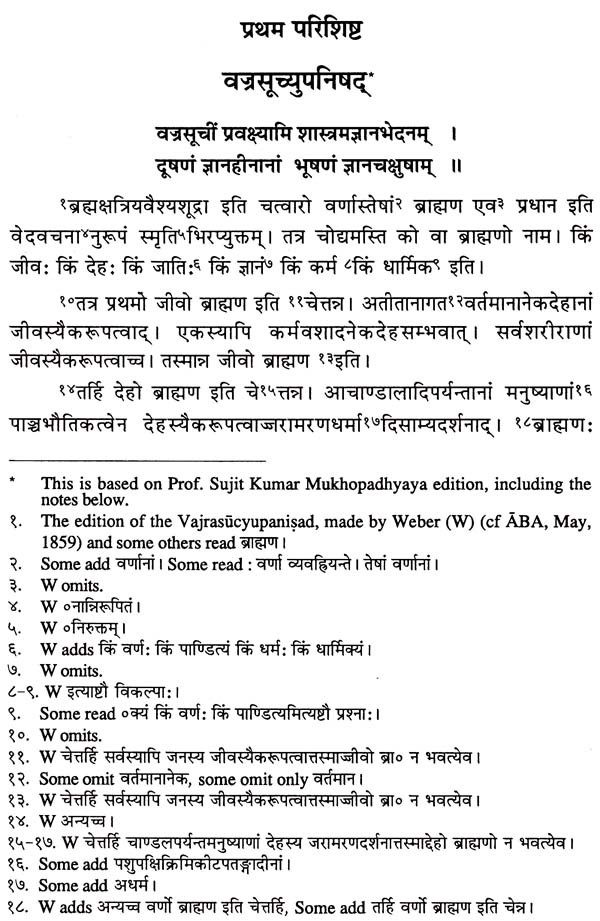
आचार्याश्वघोषकृत वज्रसूची: Acarya Asvaghosa's Vajrasuci
Book Specification
| Item Code: | UAP183 |
| Author: | Losang Norbu Shastri and Lobsang Dorjee (Rabling) |
| Publisher: | Central Institute Of Higher Tibetan Studies Sarnath, Varanasi |
| Language: | Tibetan Hindi English Sanskrit |
| Edition: | 2006 |
| ISBN: | 8187127546 |
| Pages: | 316 |
| Cover: | PAPERBACK |
| Other Details | 9.50 X 6.00 inch |
| Weight | 510 gm |
Book Description
Vajrasuci is a small but quite known Sanskrit literature found among the minor Upaninşads. This text seems to be a much later adaptation on the basis of Asvaghosa's Vajrasuci known as Vajrasacyupanisada ascribed to a Vedanta scholar probably with same name of Sankara. The theme is drawn on the same line of Asvaghosa's Vajrasuci refutation of the castes but proves the Satcitananda as the true Brahamana in the end and finally also Purana gets mention in the text.
However, there is another text bigger in size as compared to the above entitiled Vajrasuci, more explicit, well written but unknown. It was never printed until during nineteenth century, it was printed twice. It was first printed in 1839 by Lancelot Wilkinson and then by the eminent scholar A. Weber in Berlin, in the German Journal ABA in May 1859. After that it was not republished until the middle of twentieth century. It was published for the first time in India in the Visva-Bharati Annals, Vol. II in 1949. It was reprinted in the following year and published by the Sino-Indian Cultural Society at Shantiniketan.
The Visva-Bharati edition was based on six Mss. Among them there are two original Mss., which was borrowed from the Society of Bengal and from Bhandarkar Oriental Research Institute, Poona. One Transcription made from a Mss. of the Adyar Library Madras; three Rotographs, one from the Cambridge University, and two from India Office, London were made access even during the War in Europe.
Acarya Asvaghosa's Vajrasdel is a unique thought and history on social philosophy of ancient India and is a great significance for the study of sociological studies that the historian and sociologists have failed to give due importance which it deserves. Before the advent of Buddha, ancient India reminisces of sphere of social philosophy based on Varna division and the justification of supremacy of Brahmanas in the social grouping. Buddha was the first to raise the issue of such a supremacy and social injustice infested toward other three Varnas. He taught profusely on this subject and said that it was a myth created by ignorance and guided by the principle of egoism by a handful of people. The Buddha realized the seriousness of the problem of such social inequality. This can be substantiated in the Brahmana section of Dhammapada. Väsettha sutta, Ásvalayana sutta of Majjimanikäya, Särdalakarṇāvadāna of Divyavadana, Uddäna varga etc. After that lines of his followers viz., Nagarjuna, Aryadeva, Acarya Candrakirti, Acarya Bhavaviveka, Acārya Asvaghosa and so forth raised the issue to the level of academic level with honesty and reasoning.
Among the Buddhists savants Asvaghosa's criticism of social superiority on the grounds of birth, he used the authentic Brahmanical texts to show their supremacy as sheer contradictory what they are claiming. The Vajrasuci is outstanding on many scores. He could not satisfy his convictions merely by presenting remarks from the Buddhist point of view and reasoning. Thus, he pierced like an adamantine needle as it were into the eyes of the privilege orthodoxy to compel conscious of the gravity what they professed are in loggerhead with their authentic texts. The text is to be admired for its subtle debating skill that demolishes the thesis of his opponents by quoting their own authentic scriptures. He never once substantiated the utterances of the Buddha or any other Buddhist authority in his support.
**Contents and Sample Pages**
